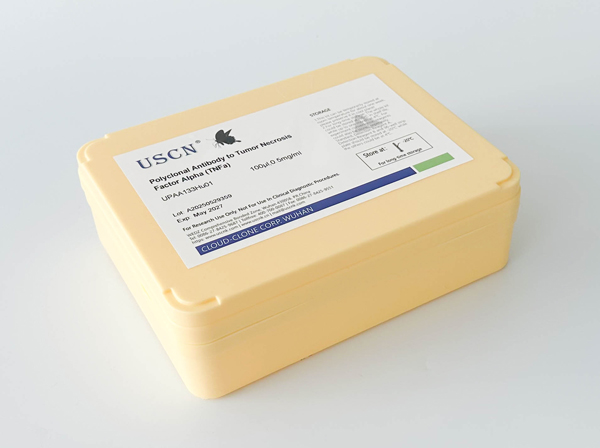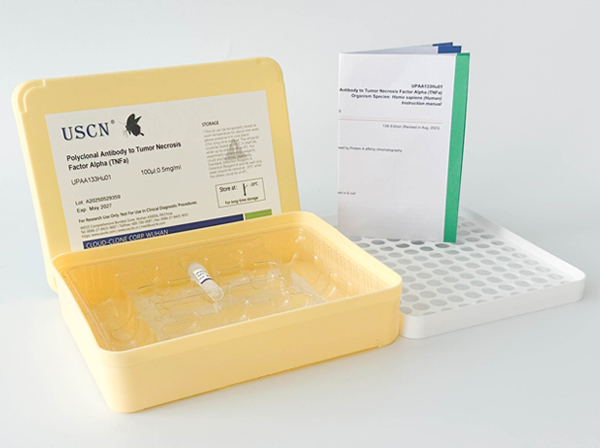Polyclonal Antibody to Killer Cell Immunoglobulin Like Receptor 2DL3 (KIR2DL3)
CD158B2; Cl-6; Nkat2; Nkat2a; Nkat2b; p58; CD158 antigen-like family member B2; MHC class I NK cell receptor; Natural killer-associated transcript 2
- Product No.UPAD709Hu01
- Organism SpeciesHomo sapiens (Human) Same name, Different species.
- SourcePolyclonal antibody preparation
- HostRabbit
- Potencyn/a
- Ig Type IgG
- PurificationAntigen-specific affinity chromatography followed by Protein A affinity chromatography
- LabelNone
- Immunogen RPD709Hu01-Recombinant Killer Cell Immunoglobulin Like Receptor 2DL3 (KIR2DL3)
- Buffer Formulation0.01M PBS, pH7.4, containing 0.05% Proclin-300, 50% glycerol.
- TraitsLiquid
- Concentration0.5mg/mL
- Organism Species Moren/a
- ApplicationsIHC
If the antibody is used in flow cytometry, please check FCM antibodies. - Download Instruction Manual
- UOM 20µl100µl 200µl 1ml 10ml
-
FOB
US$ 53
For more details, please contact local distributors!US$ 123
For more details, please contact local distributors! US$ 175
For more details, please contact local distributors! US$ 438
For more details, please contact local distributors! US$ 1750
For more details, please contact local distributors!
SPECIFITY of the Polyclonal Antibody to Killer Cell Immunoglobulin Like Receptor 2DL3 (KIR2DL3)
The antibody is a rabbit polyclonal antibody raised against KIR2DL3. It has been selected for its ability to recognize KIR2DL3 in immunohistochemical staining and western blotting.
USAGE of the Polyclonal Antibody to Killer Cell Immunoglobulin Like Receptor 2DL3 (KIR2DL3)
Immunohistochemistry: 5-20µg/mL;
Optimal working dilutions must be determined by end user.
STORAGE of the of the Polyclonal Antibody to Killer Cell Immunoglobulin Like Receptor 2DL3 (KIR2DL3)
Store at 4°C for frequent use. Stored at -20°C in a manual defrost freezer for two year without detectable loss of activity. Avoid repeated freeze-thaw cycles.
STABILITY of the Polyclonal Antibody to Killer Cell Immunoglobulin Like Receptor 2DL3 (KIR2DL3)
The thermal stability is described by the loss rate. The loss rate was determined by accelerated thermal degradation test, that is, incubate the protein at 37°C for 48h, and no obvious degradation and precipitation were observed. The loss rate is less than 5% within the expiration date under appropriate storage condition.
GIVEAWAYS
INCREMENT SERVICES
Antibody Labeling Customized Service
Protein A/G Purification Column
Staining Solution for Cells and Tissue
Positive Control for Antibody
Tissue/Sections Customized Service
Phosphorylated Antibody Customized Service
Western Blot (WB) Experiment Service
Immunohistochemistry (IHC) Experiment Service
Immunocytochemistry (ICC) Experiment Service
Flow Cytometry (FCM) Experiment Service
Immunoprecipitation (IP) Experiment Service
Immunofluorescence (IF) Experiment Service
Buffer
DAB Chromogen Kit
SABC Kit
Long-arm Biotin Labeling Kit
Real Time PCR Experimental Service
Related products
| Catalog No. | Organism species: Homo sapiens (Human) | Applications (RESEARCH USE ONLY!) |
| URPD709Hu01 | Recombinant Killer Cell Immunoglobulin Like Receptor 2DL3 (KIR2DL3) | Positive Control; Immunogen; SDS-PAGE; WB. |
| UPAD709Hu01 | Polyclonal Antibody to Killer Cell Immunoglobulin Like Receptor 2DL3 (KIR2DL3) | IHC |
| ULAD709Hu81 | FITC-Linked Polyclonal Antibody to Killer Cell Immunoglobulin Like Receptor 2DL3 (KIR2DL3) | WB; IHC; ICC; IF. |
| ULAD709Hu71 | Biotin-Linked Polyclonal Antibody to Killer Cell Immunoglobulin Like Receptor 2DL3 (KIR2DL3) | IHC |
| USED709Hu | ELISA Kit for Killer Cell Immunoglobulin Like Receptor 2DL3 (KIR2DL3) | Enzyme-linked immunosorbent assay for Antigen Detection. |
| ULMD709Hu | Multiplex Assay Kit for Killer Cell Immunoglobulin Like Receptor 2DL3 (KIR2DL3) ,etc. by FLIA (Flow Luminescence Immunoassay) | FLIA Kit for Antigen Detection. |



